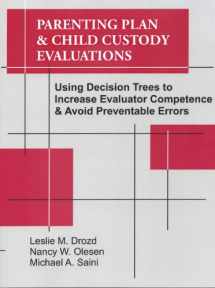
Parenting Plan & Child Custody Evaluations: Using Decision Trees to Increase Evaluator Competence & Avoid Preventable Errors
Book details
Summary
Description
This book demonstrates to evaluators how to develop systematic ways to improve the processes they use to create and test hypotheses, collect information, organize the information they have, and analyze the data in a transparent and comprehensive way. The authors provide visual ways to organize information in these evaluations with charts, decision trees, and grids. Contains reproducible checklists and tools to reduce human biases and errors and to improve the accuracy of decision making. The authors believe the processes they outline may mirror those used by judicial officers in sorting and weighing evidence, creating clusters of factors around issues, and generating decisions based on the overall evidence presented in court. The authors' approach stems from the strong belief that it is critical for those who work with families to emphasize the importance of parenting over the ownership implications of determining custody. Although both "custody" and "parenting plan" are used interchangeably in the book to be consistent with previous writings, "parenting plan evaluations" is used in the development of the resources that have been created to make better parenting plan decisions.


We would LOVE it if you could help us and other readers by reviewing the book
Book review



